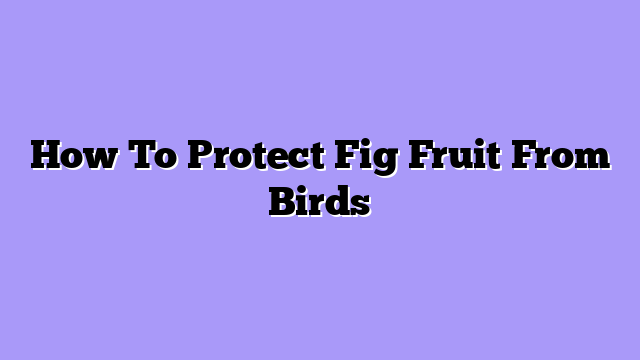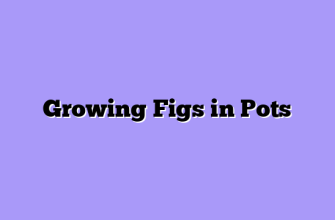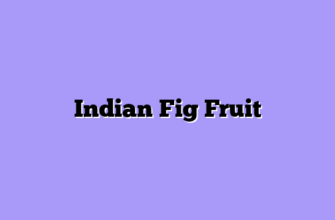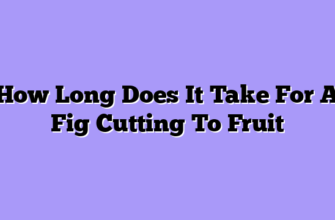There’s nothing quite as frustrating as walking out to your orchard on a beautiful morning, anticipating the harvest of perfectly ripened figs, only to find that birds have beaten you to the punch. I’ve learned this lesson the hard way more times than I care to admit. Those feathered thieves have an uncanny ability to know exactly when a fig (Ficus carica) reaches peak sweetness—often about twelve hours before I think it’s ready to pick.
Growing common figs has been one of my most rewarding ventures in exotic fruit cultivation, but it’s also taught me that success isn’t just about nurturing the tree—it’s about outsmarting the wildlife that views your orchard as an all-you-can-eat buffet. Whether you call them figs, higos (Spanish), figues (French), or simply refer to them as the fruit of the “weeping fig tree” family, protecting them from avian raiders requires strategy, persistence, and a willingness to experiment.
Understanding Why Birds Love Your Figs
Before we dive into protection methods, let’s talk about why birds find figs so irresistible. The answer is simple: figs are nature’s candy. With sugar content reaching 16-20% at peak ripeness, these fruits are packed with quick energy.

The timing makes it even more challenging. Most fig varieties ripen gradually over several weeks rather than all at once, meaning you can’t simply harvest everything in one go. This extended ripening period creates an ongoing battle where you’re essentially competing with birds for individual fruits over an entire season.
The Arsenal: Proven Protection Methods
Through trial, error, and countless conversations with fellow growers, I’ve developed a multi-layered approach to protecting my figs. Here’s what actually works in the real world.
Physical Barriers: Your First Line of Defense
Netting remains the gold standard for fig protection, but not all netting is created equal. I learned early on that cheap, lightweight bird netting from the hardware store simply doesn’t cut it. Birds can get tangled in it (which creates a whole new problem), and determined ones will peck right through to reach the fruit.
Here’s what I recommend based on hands-on experience:
Effective Netting Options:
- Heavy-duty UV-resistant netting with 3/4-inch mesh (durable enough to last multiple seasons)
- Side netting secured completely to the ground (birds are surprisingly good at finding gaps)
- PVC or metal framework to keep netting away from fruit (prevents birds from pecking through)
- Double-layer systems for high-value varieties (extra insurance for premium fruit)
The key is creating a proper structure. I build simple frames using PVC pipes or bamboo poles that drape over smaller trees, keeping the netting several inches away from the branches. This prevents birds from perching on the netting and reaching through to peck the figs. For larger trees, I use a technique where I net only the ripening sections, moving the coverage as different parts of the tree mature.
One successful season, I compared my netted trees against unprotected controls, and the difference was staggering. The netted trees yielded approximately 85% of their potential crop, while unprotected trees lost about 60% to bird damage. That’s not just a statistic—that’s the difference between a profitable season and a disappointing one.
-$-$$
| Protection Method | Effectiveness Rate | Initial Cost | Maintenance Level | Best For |
|---|---|---|---|---|
| Heavy-Duty Netting | 85-95% | $$$ | Medium | All tree sizes |
| Individual Fruit Bags | 90-100% | $ | High | Small-scale or premium varieties |
| Visual Deterrents | 20-40% | $ | Low | Supplementary use only |
| Automated Scare Devices | 30-50% | Medium | Large orchards | |
| Combination Approach | 90-98% | Medium-High | Serious growers |
Individual Fruit Protection: Labor-Intensive But Effective
For my most prized varieties—like the honey-sweet Kadota or the rich Black Mission figs—I sometimes use individual organza bags or paper bags. Yes, it’s tedious. Yes, it takes time. But when you’re growing specialty varieties that fetch premium prices at farmer’s markets, the labor investment pays off.
The process is straightforward: once figs reach about half their mature size, slip a small drawstring bag over each fruit. The bag allows air circulation while keeping birds out. I use this method selectively, typically on 20-30% of my highest-value trees. It’s like giving your figs their own personal security detail.
Scare Tactics: The Diminishing Returns Problem
Every new grower gets excited about scare devices. Reflective tape, fake owls, predator eye balloons, wind chimes—I’ve tried them all. Here’s the uncomfortable truth: birds are smart. Really smart. Those strategies might work for a few days, maybe a week if you’re lucky, but birds quickly learn that your plastic owl doesn’t move, hunt, or pose any real threat.
That said, these methods aren’t completely useless. They work best as part of a rotation strategy. I’ll use reflective pinwheels for a week, then switch to metallic streamers, then try sonic devices. The constant change keeps birds slightly more wary. Think of it as psychological warfare rather than a fortress—it buys you time but won’t win the war alone.
Advanced Strategies for Serious Growers
Once you’ve mastered the basics, there are some next-level approaches worth considering.
Timing Your Harvest Window
I’ve learned to pick figs at the “pre-ripe” stage—about 12-24 hours before they reach absolute peak ripeness. At this point, the fruit has achieved about 90% of its potential sweetness and will continue ripening after harvest. This narrow window is your competitive advantage. Birds seem programmed to wait for peak ripeness, so harvesting slightly early lets you win the race without sacrificing much quality.
The trick is learning exactly what “pre-ripe” looks like for each variety. For Brown Turkey figs, I look for a slight softness at the neck and a color shift from green-brown to purple-brown. For Celeste figs, it’s when the skin just begins to show tiny cracks at the eye. These subtle indicators took me several seasons to master, but now I can walk through my orchard and identify the perfect picking moment.
Creating Alternative Food Sources
Here’s a counterintuitive strategy that actually works: give the birds something else to eat. I planted a row of mulberry trees (Morus species) along the edge of my property. Mulberries ripen at roughly the same time as early-season figs, and many bird species prefer them. It’s not a complete solution, but it reduces pressure on the fig trees by offering an easier alternative.
Some growers take this further by maintaining designated “sacrifice trees”—figs specifically left unprotected to keep birds occupied while the protected trees fruit in peace. I’m not quite that generous with my harvest, but I do leave some early-season figs accessible as a peace offering to the local wildlife.
Sound and Motion Technology
Modern technology offers some interesting options. I’ve experimented with motion-activated sprinklers and ultrasonic devices with mixed results. The sprinklers work surprisingly well for ground-feeding birds but do nothing for species that feed from the branches. Ultrasonic devices seem effective for about two weeks before birds adapt.
The most promising technology I’ve tested is a programmable sound system that plays predator calls at irregular intervals. The key word is “irregular”—birds quickly ignore predictable patterns. By varying the timing and type of call, I’ve extended the effectiveness to about a month before needing to change the strategy.
Creating Your Protection Plan: Step-by-Step
Let me walk you through how I approach fig protection for a typical season, using a systematic methodology that you can adapt to your situation.
- Early Season Assessment (6-8 weeks before first ripening): Survey your trees and identify which varieties will ripen first. Birds always hit the early varieties hardest, so these need maximum protection.
- Infrastructure Installation (4-6 weeks before ripening): Set up netting frameworks, install any automated devices, and prepare individual fruit bags. Doing this early means you’re not scrambling when fruits start coloring up.
- Staged Implementation (2 weeks before ripening): Begin with visual deterrents to establish territory. Add sonic devices a few days later. Deploy netting when fruits are about 75% mature size.
- Active Monitoring Period (during ripening): Walk your orchard daily, checking for netting breaches, monitoring bird pressure, and harvesting at optimal moments. This is the critical period where attention to detail makes all the difference.
- Adaptation Phase (ongoing): Rotate deterrent methods every 5-7 days. Move reflective devices to new positions. Change sound patterns. Keep birds guessing.
- Post-Season Review: Document what worked and what didn’t. Calculate loss percentages for different protection methods. Plan improvements for next season.
The Economics of Protection
Let’s talk numbers, because ultimately, this is about protecting your investment. In my operation, the average fig tree produces about 40-60 pounds of fruit per season when mature. At farmer’s market prices ranging from $8-12 per pound for premium varieties, that’s $320-720 per tree in potential revenue.
Compare that to protection costs:
| Investment Area | Cost Per Tree | Lifespan | Annual Cost |
|---|---|---|---|
| Quality Netting System | $40-60 | 3-5 years | $10-20 |
| Support Structure | $25-35 | 5-7 years | $4-7 |
| Scare Devices (rotation) | $15-25 | 2-3 years | $6-10 |
| Labor (installation/monitoring) | Variable | Annual | $30-50 |
| Total Annual Investment | $50-87 |
With proper protection preventing 60-80% of bird losses, you’re saving $192-576 per tree annually. That’s a return on investment that makes the effort worthwhile, especially when you’re managing more than a handful of trees.
Real-World Lessons From the Orchard
I want to share a specific example that changed how I think about fig protection. Three seasons ago, I had a particularly aggressive population of starlings that seemed immune to every deterrent I tried. They’d wait until I left the orchard each afternoon, then swoop in for a feast. Netting helped but wasn’t practical for my largest, oldest tree—a massive Adriatic Green fig that produced over 100 pounds per season.

The lesson? Generic solutions rarely work. You need to observe, adapt, and customize your approach to your specific situation, your specific birds, and your specific orchard layout.
Common Mistakes to Avoid
Through conversations with fellow growers and my own errors, I’ve identified the most common pitfalls:
Waiting too long to implement protection. By the time you see bird damage, you’re already behind. Protection must be in place before ripening begins.
Relying on single-method solutions. Birds are adaptable. Your protection strategy needs to be equally flexible and multi-faceted.
Using inadequate netting. That cheap, flimsy stuff is worse than nothing—it tangles birds without protecting fruit, creating an ethical nightmare and wasting your money.
Neglecting to rotate deterrents. Static scare devices become part of the landscape within days. Constant change is essential.
Ignoring harvest timing. The difference between losing fruit and saving it often comes down to a single day’s harvest timing.
Finding Your Balance
Here’s the thing about protecting figs from birds: perfection is neither achievable nor necessary. Even with my best efforts, I typically lose 10-15% of my crop to various causes, including some bird damage. That’s acceptable in my operation because the alternative—trying for 100% protection—would require resources and time that make the entire venture unprofitable.
Your goal should be finding the sweet spot where your protection efforts are effective enough to secure most of your harvest but not so intensive that you’re spending more time and money than the saved fruit is worth. For me, that means prioritizing my highest-value varieties with intensive protection while using lighter methods on more common cultivars.
Think of it like insurance. You want enough coverage to protect against significant losses, but you don’t need to insure every possible risk at the highest level.
Wrapping Up: Your Action Plan
So where do you start? If you’re new to growing Ficus carica and dealing with bird pressure, begin with good quality netting on a simple frame system. Master that fundamental technique first. As you gain experience and expand your operation, layer in additional strategies based on your specific challenges and the bird species in your area.
Remember that protecting figs from birds isn’t about winning every battle—it’s about winning the war over an entire season. Some fruits will be lost. That’s farming. Your job is to ensure that the majority of your harvest makes it from tree to table (or market) intact.
The satisfaction of harvesting a basket full of perfect, unblemished figs—knowing you’ve successfully defended them against determined avian competitors—never gets old. Neither does the taste of a sun-warmed fig, picked at perfect ripeness, that actually made it to your mouth instead of a bird’s belly. That’s what makes all these protective measures worthwhile.








